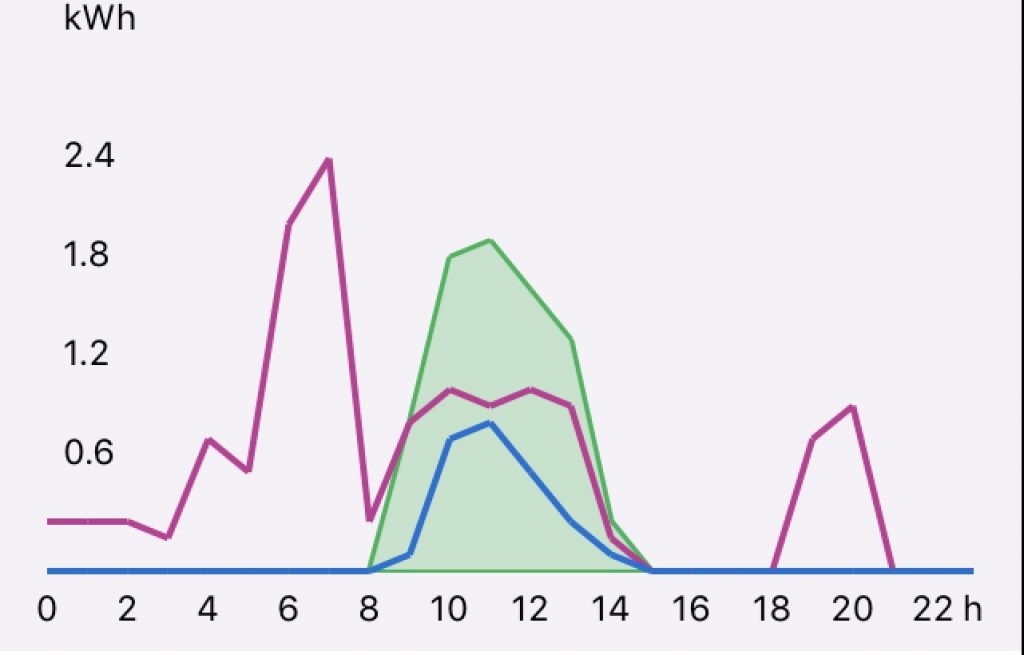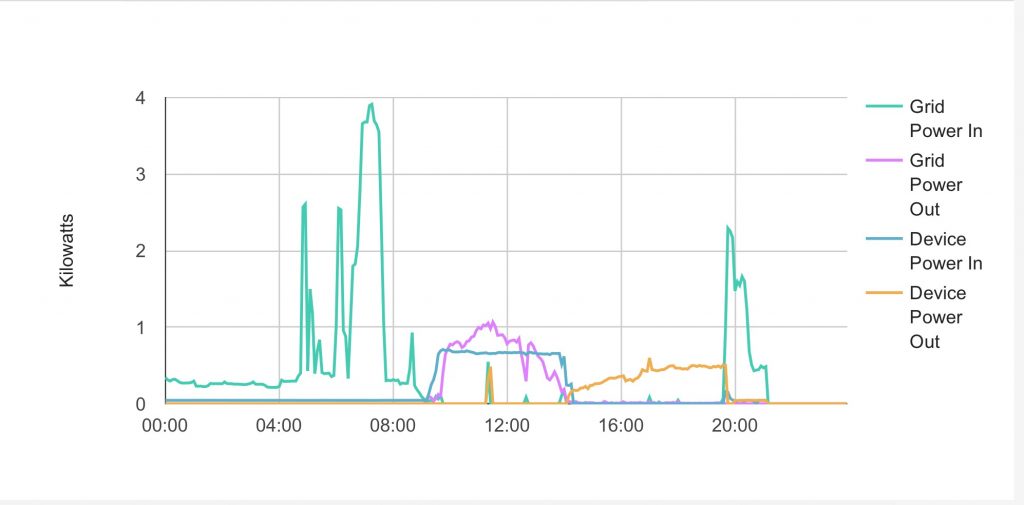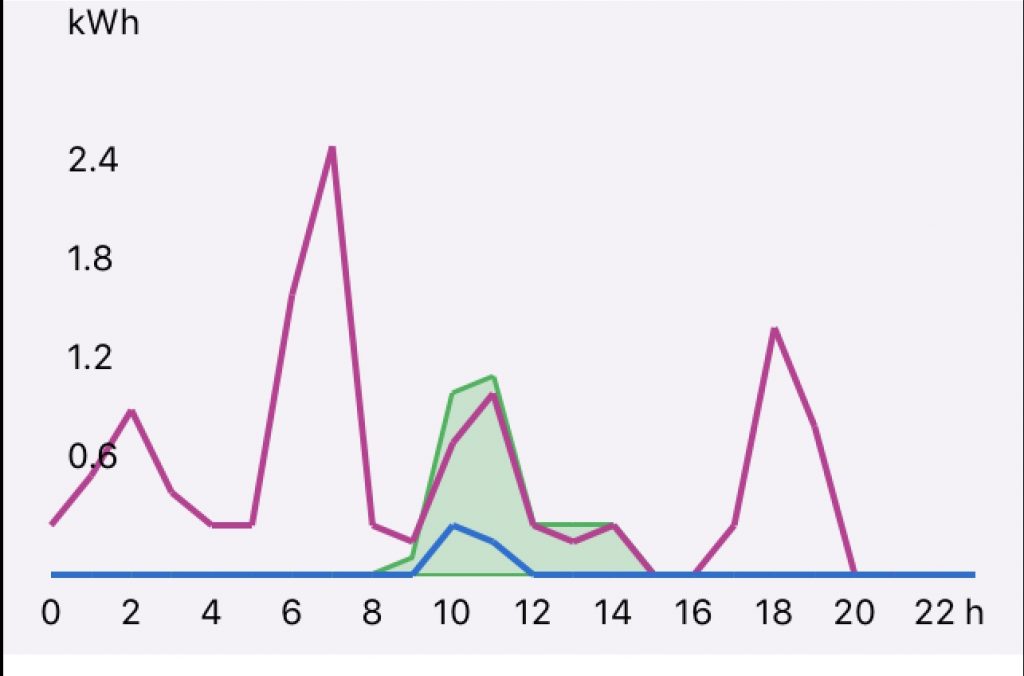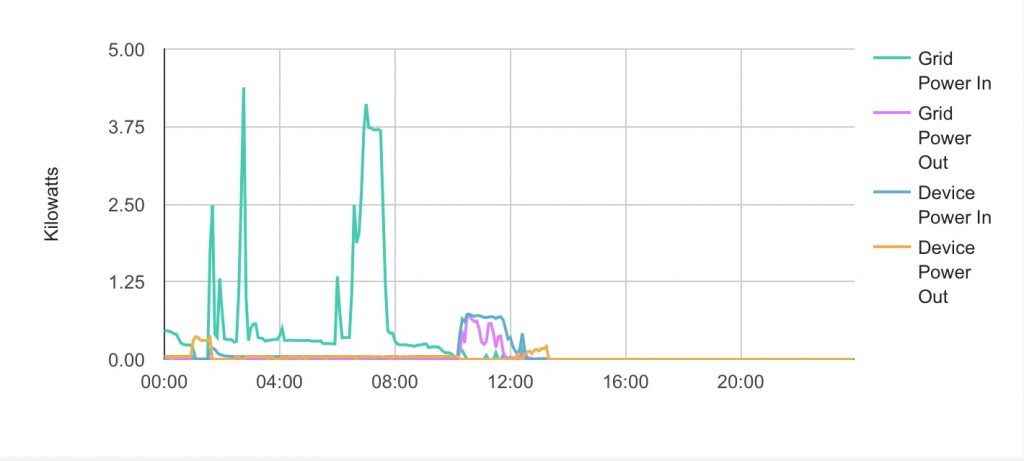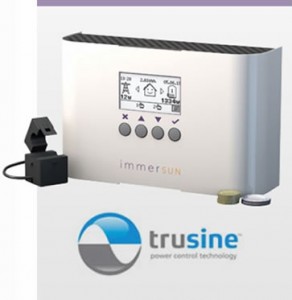If I want to make best use of my solar PV (i.e. use as much of it as possible) then it seems logical to prioritise replacing my most expensive energy purchases. Examination of my bills suggests that my different sources of energy have the following costs:
- Day-time electricity: 12.31 p/kWh
- Night-time electricity: 8.02 p/kWh
- Any-time gas: 2.87 p/kWh
- Solar PV (when available): 0.00 p/kWh
In winter when little PV electric is available our normal practice is to shift as much electric load as possible to night time use saving 4.29 p/kWh by use of timers. Washing machine, dishwasher, and electric car charging all get shifted to Economy 7 by use of timers. The washing machine is the oldest and uses a external timer plug while both dishwasher and car have their own inbuilt timers allowing consumption to be delayed.
In summer the same approach can be used to shift these loads to daytime to make use of solar PV although if the weather is dull and cloudy there’s no guarantee that sufficient PV will be available risking consumption of bought daytime electricity.
My Immersun already minimises exported/surplus PV by running the immersion heater to mop up surplus electricity, although as gas is cheap the savings are smaller than might be achieved by avoiding a similar amount of night-time electricity consumption. In winter we minimise gas use for water heating, while still providing a gas safety net by displacing in both time and temperature. The Immersun naturally heats water in daylight hours only and generates hot water at 60C (not adjustable) as defined by the immersion heater thermostat. The gas is set to complement this being set by timer not to overlap Immersun hours and is set to 50C by the cylinder thermostat. The water temperature difference is not noticeable in practice especially as the showers are thermostatically regulated.
 The device that consumes most electric power is undoubtedly my electric car. Its usable battery capacity is about 10.5 kWh and, with charging efficiencies, it can take up to 12 kW of mains electricity to charge (less in summer). The appeal of charging this on solar PV is high, although the cost of doing this if it inadvertently draws day-time electricity is also high (but still much cheaper than petrol or Diesel). It occurred to me that it would be good to use spare channels on the Immersun to control car charging as my largest consumer of my most expensive fuel. It has three channels – two variable power and one on/off – although it can be configured to produce three variable outputs using the on/off to switch between devices.
The device that consumes most electric power is undoubtedly my electric car. Its usable battery capacity is about 10.5 kWh and, with charging efficiencies, it can take up to 12 kW of mains electricity to charge (less in summer). The appeal of charging this on solar PV is high, although the cost of doing this if it inadvertently draws day-time electricity is also high (but still much cheaper than petrol or Diesel). It occurred to me that it would be good to use spare channels on the Immersun to control car charging as my largest consumer of my most expensive fuel. It has three channels – two variable power and one on/off – although it can be configured to produce three variable outputs using the on/off to switch between devices.
It seems to me that there are three alternatives for control:
- Proportional control.
- Stepped control.
- On/Off control.
Proportional control would be the most capable. The Immersun has the capability to provide proportional control to multiple resistive loads, and the Mode 3 communications standard to which virtually all electric cars adhere also provides for the charging equipment sending a proportional signal to the car via PWM, so there’s scope for a proportional system. However it seemed that the time to develop this was beyond what I have available, and in practice although the car would receive a proportional control signal it would normally respond in a stepped manner so there’s little to be gained by investing my time to develop a fully proportionate system..
Stepped control is easier to achieve. As it happens my car model is more steppy than some as I believe that it switches between 6, 10 or 15 Amps consumption only. 15 Amps is very close to the full 4 kW output of my panels and, given that there are always other loads in the house, then I don’t think it would ever use this setting, which leaves me with switching between 0, 6 and 10 Amps. Unfortunately of course you can’t switch between 3 states with an on/off signal that only has 2 states, so I’d still need to decode an analogue Immersun output or invest in a second Immersun to get another on/off output but I deemed the latter cost-prohibitive. Generating a variable current signal to the vehicle would also require some logic to reduce the pulse width on the PWM signal on demand – not impossible but still requiring some time to create.
That leaves me with on/off control at a fixed current. This is readily achieved from the Immersun which has a relay output that can be configured to operate when a certain solar power is available (such as 1.5 kW to drive a 6 Amp charger). I decided not simply to turn the whole charger on or off by switching the power as this would cause the mains contactors in the charger and the HV DC contactors in the vehicle to drop out under load which is bad for longevity. Instead I’ll interrupt a low voltage control signal within the charger to trigger stop and restart in a more controlled manner – effectively car and charging equipment will see the signal as the user wishing to disconnect the cable as you might if you wished to drive before charging was complete.
Finally I considered how to connect the Immersun to the charging equipment. Unfortunately the Immersun is in the airing cupboard upstairs (where it drivers the immersion heater) and the garage where the car charges is a separate building alongside the opposite side of house. Neither a second Immersun or a physical cable looked like an attractive prospect on cost grounds so I decided on radio control using around £20 of home automation parts and a total investment of around £40. More on this solution over the next few weeks.

